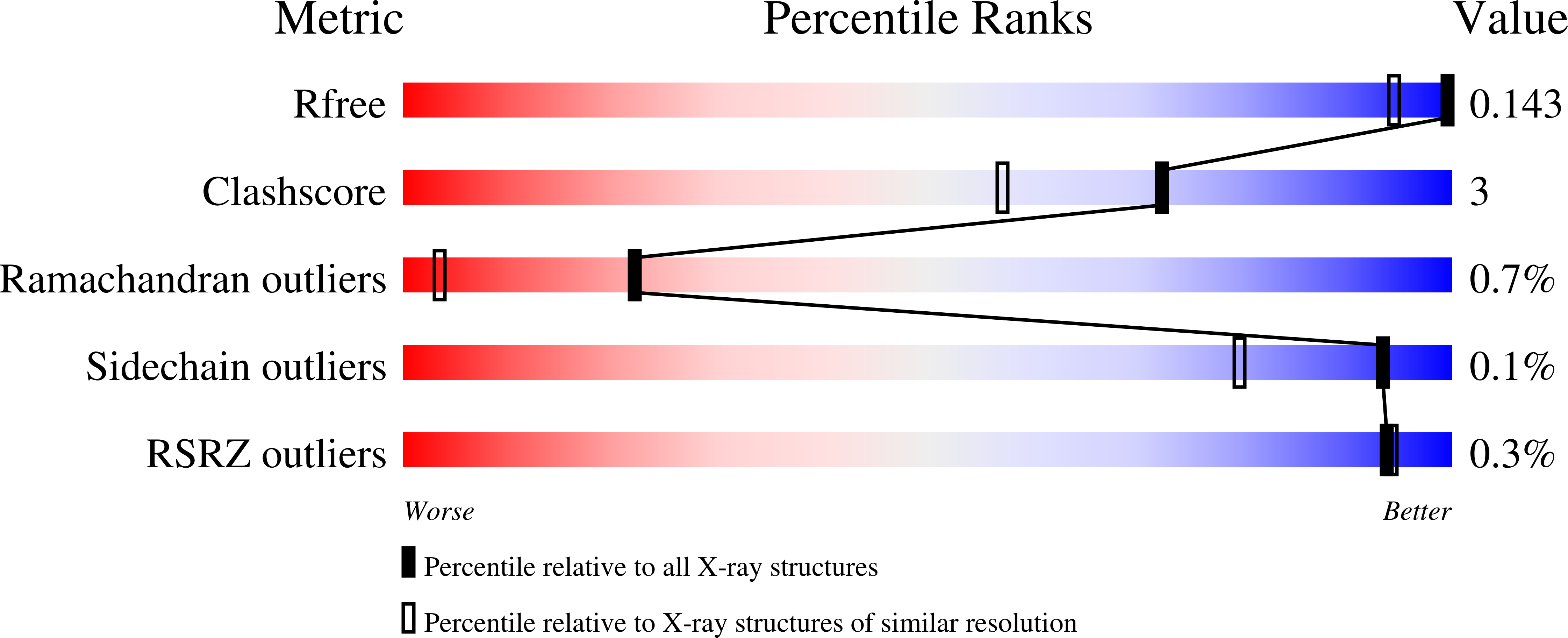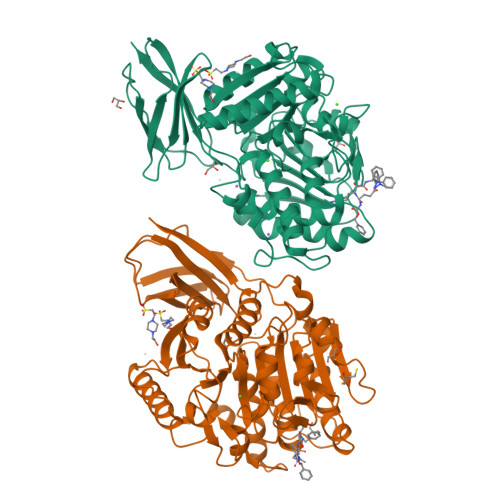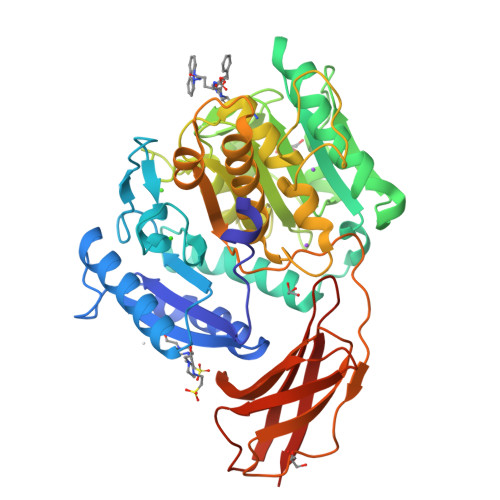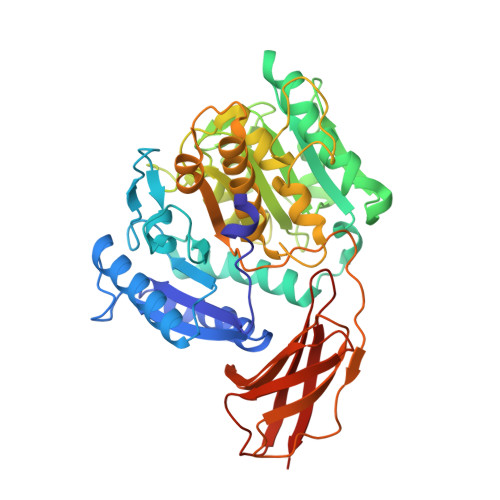Structural determinants of inhibition of Porphyromonas gingivalis gingipain K by KYT-36, a potent, selective, and bioavailable peptidase inhibitor.
Guevara, T., Rodriguez-Banqueri, A., Lasica, A.M., Ksiazek, M., Potempa, B.A., Potempa, J., Gomis-Ruth, F.X.(2019) Sci Rep 9: 4935-4935
- PubMed: 30894633
- DOI: https://doi.org/10.1038/s41598-019-41354-3
- Primary Citation of Related Structures:
6I9A - PubMed Abstract:
Porphyromonas gingivalis is a member of the dysbiotic oral microbiome and a "keystone pathogen" that causes severe periodontal disease, which is among the most prevalent infectious diseases. Part of the virulence factors secreted by P. gingivalis are the essential cysteine peptidases gingipain K (Kgp) and R (RgpA and RgpB), which account for 85% of the extracellular proteolytic activity of the pathogen and are thus prime targets for inhibition. We report the high-resolution (1.20 Å) complex structure of Kgp with KYT-36, a peptide-derived, potent, bioavailable and highly selective inhibitor, which is widely used for studies in vitro, in cells and in vivo. Sub-nanomolar inhibition of Kgp is achieved by tight binding to the active-site cleft, which is covered for its sub-sites S 3 through S 1 ' under establishment of nine hydrophobic interactions, 14 hydrogen bonds and one salt bridge. In addition, an inhibitor carbonyl carbon that mimics the scissile carbonyl of substrates is pyramidalized and just 2.02 Å away from the catalytic nucleophile of Kgp, C 477 Sγ. Thus, the crystal structure emulates a reaction intermediate of the first nucleophilic attack during catalysis of cysteine peptidases. The present study sets the pace for the development of tailored next-generation drugs to tackle P. gingivalis.
Organizational Affiliation:
Proteolysis Lab, Structural Biology Unit, "María de Maeztu" Unit of Excellence, Molecular Biology Institute of Barcelona (CSIC), Barcelona Science Park, Helix Building, c/Baldiri Reixac, 15-21, 08028, Barcelona, Catalonia, Spain.


























